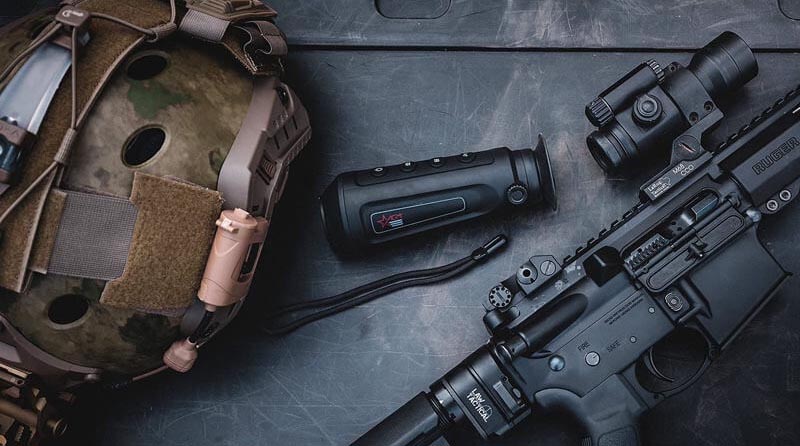Thermal imaging technology has been around for a while now, yet it still surprises users around the world with the results and performance it delivers. One aspect of this technology belongs to thermal imaging monocular. Instead of light, this device uses the heat that a subject emits to form a heat map and detect the presence of the subject. On the contrary to what some people may think, the best thermal imaging monoculars may be easy to spot if you know where and how to look. Take a look below AGM Global Vision monocular that personally inspired me!
To achieve that, today we compiled reviews of the best thermal monoculars currently on the market together with a complete buying guide, and frequently asked questions to make the matter more understandable. Read on and be ready to take some notes!
Top 3 Picks: Best Thermal Imaging Monoculars
BEST VALUE
Pulsar Axion XM38 5.5-22×32 Thermal Monocular
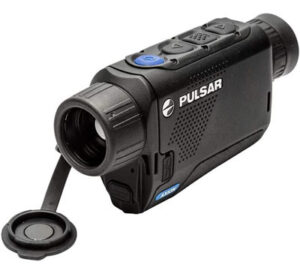
BEST OVERALL
Pulsar Helion XQ50F Thermal Monocular
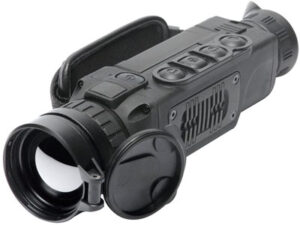
BEST PRICE
SiOnyx Aurora I Full-Color Digital Night Vision Monocular
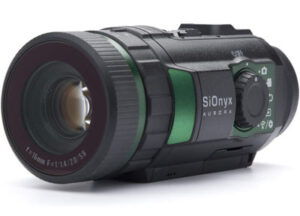
Right things to do by our Reviews
Thermal imaging monoculars are used for hunting, surveillance, military, many outdoor activities, and more. So, people need to be aware of the positive and the not-so-positive aspects of the model they have in mind so that they’re certain if the model is right for their preferences. Below, you’ll find the specifications, features, and other details regarding the thermal imaging monoculars.
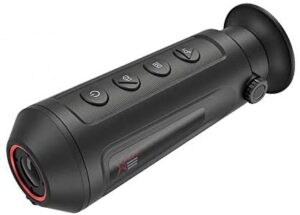
AGM Global Vision Taipan TM15-384 Thermal Imaging Monocular
Those that want to purchase a scope that offers premium thermal views and can be even mounted on a weapon will find this model useful. With a technology that gives users a chance to discover the animals and creatures’ locations based on their heat signatures in complete darkness, it is a nice companion on every hunting trip.
To make the experience easier and more enjoyable for people, it also has a smart rangefinder that’s built-in. And the reticle is adjustable with three levels of brightness.
Finally, the product is convenient for outside utilization in changing weather conditions. This is due to the fact that it’s fog proof, waterproof, and shockproof. Yet all of these options come at a higher price than many of the other scopes, which users find as a con associated with this model.
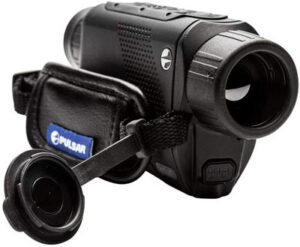
Pulsar Axion Key XM30 2.4-9.6×24 Thermal Monocular
With great magnification powers, users can zoom in a lot on the subjects that they’re observing. This is improved even more due to the digital zooming capabilities. The monocular has a palette, which consists of eight colors for observation in multiple conditions.
Moreover, people can take pictures and record videos of what they’re seeing. The internal memory is sufficient for the storage of this visual material. Also, there’s a streaming option.
With a magnesium alloy design, the model is exceedingly long-lasing and light at the same time. Additionally, it’s considered to be very compact and can be held with a single hand.
On the other hand, some buyers didn’t like that there isn’t a built-in rangefinder.
Are you a fan of birdwatching? Check the Best Monoculars for Bird Watching.
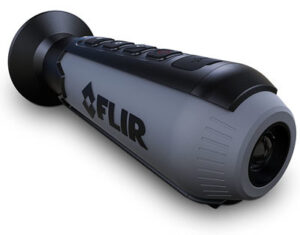
FLIR Ocean Scout TK Dark Gray Monocular
FLIR has made its model for observation during both nighttime and low-light surroundings. Further, buyers can use it outdoors and even on the water for seeing buoys, objects in the water, vessels, and more.
As the brand mentions, users can see heat instead of light. So, what they see can be captured in the form of a still image or a video. When it comes to video recording, users can choose from plenty of color palettes that suit their present needs.
Something that can be improved, according to a handful of users, is the quality of the camera. If you’re still interested, glance over the model’s highlight specifications and features.
Looking to review the best brands? Then check the 9 Best Handheld Thermal Imager Brands.

Pulsar Axion XM38 5.5-22×32 Thermal Monocular
Made of a rugged magnesium alloy material, the construction provides the needed sturdiness yet looks nice and elegant. Users can easily take a grip and carry it with them. The model has waterproof capabilities, too.
Moving onto its performance, the model boasts with plenty of magnification and zooming options. There’s also a picture-in-picture digital zoom available for long-range observation.
Together with the monocular, buyers get a battery pack, as well as a charging kit, a hand strap and case for easier carrying around, a lens cloth for cleaning and maintenance, and a USB cable.
A slight con regarding the model that was noted by a few customers was the fact that this thermal monocular can’t be mounted on a rifle.
Are you looking for hunting gear? Check the 10 Best Thermal Imaging for Hunting.
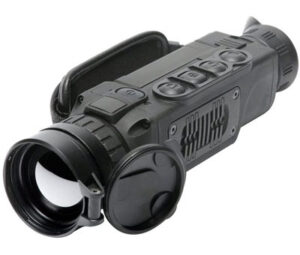
Pulsar Helion XQ50F Thermal Monocular
Even though it’s a bit expensive, this thermal monocular truly delivers impeccable results. Thanks to a high resolution and high refresh rate, users have the chance to see dynamic and vivid images. The model can detect subjects from afar. This is aided by the special stadiametric rangefinder. What’s more, the interface is designed to encourage the usage of people who aren’t really experienced with thermal monoculars. So, they can easily find their way around it. A mobile connection is another useful plus.
A small minus regarding the model would be its slightly higher price. Some users also mention that it typically delivers the best results in vast open spaces. Nevertheless, pay attention to some of the model’s specifications and features.
Read More: 8 Night Vision sx40 Digital Monocular.
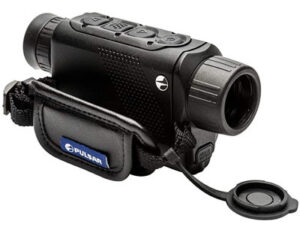
Pulsar Axion Key Xm22 2-8×18 Thermal Monocular
Although it’s pretty light and small, the model packs plenty of features in its body. With that being said, it can be utilized for a wide variety of purposes and in different conditions.
Waterproof capabilities and metal construction enable the usage in even extreme weather. The delivered visuals are realistic, clear, and crisp.
However, a couple of users noticed that the magnification powers are a bit lower when compared to similar models.
We dedicate a segment to the features and specifications of this thermal monocular.
Read More: Night Vision Monocular Scope Adapter Brands.
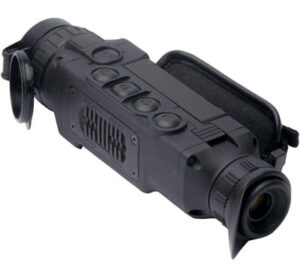
Pulsar Helion XQ Thermal Monocular
Although the price strikes many people as high, there are some things about this product that makes it worth it. For one, it has an armor that is made to resist frost and other harsh weather conditions. The same applies to the display, which is why the monocular can be utilized both when the temperatures are low and high.
Moreover, it has a variable magnification for enhanced views at a great distance. It’s accompanied by the digital capabilities to capture photos and videos and transfer them through the Wi-Fi options.
Read More: Night Vision Monocular Head Mount.
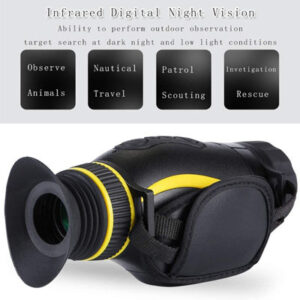
Infrared HD Night Vision Monocular Telescope Thermal Imaging
This is a model that people predominantly utilize for hunting or observing animals in nature. This is because it can detect them in low light and dark conditions from a fair distance.
But this isn’t everything it has to offer. Moreover, the thermal capabilities for analyzing the temperature changes and heat recognition operate efficiently both during the day and night. Among the smart and digital features it possesses are the options to record videos, take photos, amplifying the optics as well as transferring the materials to external devices.
However, it should be noted that users report certain downsides. One of the main ones is that when it can be more complicated to see thermally when it’s absolutely dark.
Read More Reviews: 11 Best Digital Night Vision Monoculars.

SiOnyx Aurora I Full-Color Digital Night Vision Monocular
When it comes to detailed viewing at night, this monocular provides some useful features. Even though it operates well only when there is even a bit of light involved, it still manages to deliver the desired results. This is thanks to the infrared sensor technology for capturing targets quickly.
Alongside this is the long-range observing capability. This is especially handy to hunters and shooters alike. In terms of resistance, this model can withstand changing weather conditions.
And it can be connected to an app for remote viewing and streaming of videos captured on the monocular.
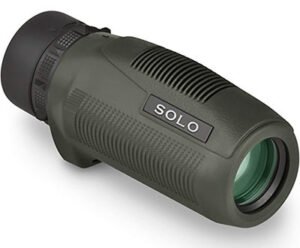
Vortex Optics Solo Monocular 10×25
Vortex is a well-known brand in the world of monoculars. It makes monoculars that can be utilized on various occasions. This includes day and night observation with enhanced zoom and infrared sensors.
As a small and compact model, this monocular offers sharp and bright views. Its armor made of rubber proves its durability and makes it comfortable to grip without it slipping from your hands. Speaking of this, even if users wear glasses, they can comfortably view through this monocular with the help of the eyecup that’s adjustable.
However, there were apparently troubles with the focus ring being very narrow and put near the eyepiece. That’s why people consider it a downside.
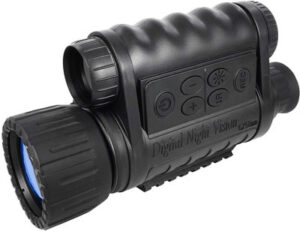
Bestguarder 6x50mm HD Digital Night Vision Monocular
Considering its affordable price, this monocular has plenty to offer. For starters, it comes with some digital options like a TFT LCD screen and a function for recording videos. They are colorful during the day and black and white at night. Another notable detail is the long observing range that expands with the illuminator.
For easier control, it incorporates a menu in multiple languages and a user-friendly interface with visible buttons. Also, it can be carried during long trips in nature without worrying about the harsh weather. The waterproof armor makes this possible.
Yet some downsides that people connect with this product are the relatively small field of view and the manual focus.
6 Things to consider (Buyer’s Guide)
The best thermal imaging monoculars can sometimes be exceedingly complex and pack many features in their construction. As such, users should be familiar with some of the highlight features they should look for in the models they plan to buy. That’s why in the following paragraphs, we’ll delve deeper into some of the features to consider and recommend some tips regarding each.
Planned Usage and Personal Needs
Even before you set out to purchase thermal imaging monocular, you should determine what you will need it for. The task you’ll be performing with it can seriously impact the expectations you have from the model as well as the whole search for buying one.
From hunting, nighttime activities, and surveillance to law enforcement and firefighting purposes, and all sorts of uses in between, you can use this type of monoculars for a wide variety of actions.
And because there are many available products out there, you have to find the one which is more suitable for the task you have in mind. To illustrate, if you plan to use a monocular for home surveillance, then you may not exactly require long-range detection and high-end technology. On the other hand, if you’re a hunter, you’ll most likely look for models that are compact, easy to pack, and that can detect the game from afar.
Light vs. Heavy Thermal Imaging Monoculars
When you’re pondering whether to buy a light-weight or a heavier model, the snap answer would be the former one. Not so fast because the answer isn’t that simple.
While lighter models are great for transport and mobility, they may not have all the features of the heavier models. That is one of the reasons why the heavier models have that weight – their increased number of features are incorporated into the monocular’s body. But these models will slightly slow you down and be a bigger pain in the back when packing and storing. So, buyers should aim for having a balance between the model’s weight and its performance that is determined by the features and specifications it possesses.
Modes
Most of the thermal monoculars are used for outdoor activities. These activities can place either during the day or at night. That’s why models often provide day and night modes to accommodate the preferences of the users.
Models can have either both modes or each of the two. Subsequently, if you plan to use a monocular both during the day, in low-light conditions, in a fog, and similar situations, then a product with the above-mentioned two modes would be desirable. But, if you intend to use it only during the night, then you don’t necessarily waste additional bucks on models with both modes.
Resolution
How clear the visuals appear to the eye is determined by the resolution of the thermal monocular.
Naturally, if the resolution is low, then details in the visuals aren’t as visible and sometimes they can be blurry. That isn’t the case with high resolution, which is recommended for a model to have.
However, you should be aware of the fact that a higher resolution may increase the price. Also, buyers shouldn’t blindly go for the highest resolution they can find. Even models with a lower resolution than the highest available can sometimes do the job efficiently as you require.
Thermal Sensor
The majority of monoculars of this type have this special thermal sensor. It detects and measures the heat levels that are emitted from humans as well as animals. After the heat is detected, the sensor constructs a heat map that provides the different levels of heat following a particular color. This is the basis for thermal technology that’s built into these monoculars. So, it shouldn’t come as a surprise that some people claim that it’s one of the most important components of the thermal monocular (if not the most important one).
Source of Power
Usually, when people perform outdoor activities, they’re utilizing their monocular for quite a long time. This performance should be supported by a great power source or battery. Moreover, if the life of the battery is shorter, no matter which characteristics are found in the model, you won’t be able to use them to their fullest capacity.
It’s worth noting, though, that this isn’t often the top priority. That’s because thanks to technological advancements and innovation, brands have introduced rechargeable batteries. Another option is back-up spare batteries that you can have by your side when you’re outside. That way you can easily replace the battery and continue working as nothing happened.
Frequently Asked Questions (FAQs)
1) Is thermal technology better than night vision?
Answer: You can’t quite compare the two types of technologies. They’re still in usage and many quality monoculars still operate with both. It’s considered that thermal models tend to be more effective at detection. That may sometimes make them pricier than night vision gear.
2) How are forward-looking infrared (FLIR) and thermal technology different from each other?
Answer: The basic difference between the two lies in the length of the waves to illuminate a subject. Active infrared technology uses short wavelength, whereas the thermal one utilizes middle size or long ones based on the model. That’s why thermal imagers are referred to as passive ones. With that being said, thermal monoculars detect how different the heat is.
3) Do thermal monoculars work during the day?
Answer: As we previously mentioned, this depends on the particular model. However, it’s possible for a model to work great during the day as well as during the night or in both types of conditions. To get this right, ask the seller or carefully read the manual that is frequently included in the purchase
4) Does thermal vision equipment work underwater?
Answer: Usually, thermal vision equipment doesn’t perform well underwater. One of the reasons is the type of glass used in thermal models. Further, water is known to block plenty of infrared wavelengths, thus preventing the model from providing efficient results as on the ground.
Final Remarks
No matter if you’re an enthusiast for outdoor activities during the night or day, a thermal imaging monocular has proven to be a useful companion. Many factors contribute to this with the main one being the easy detection of creatures based on their temperature. But living animals aren’t the only targets that can be noticed by these monoculars. With them, users can also discover leaks and extra heat in their homes and take care of possible problems on time. Not to mention that the thermal models tend to have additional features that are often digital. Due to this, it can be tough for many users to distinguish the right models that are suitable for them and match their budget. To offer assistance, here we tried to explain all details and present some of the top models you can find on the market this year.
So, have a great time shopping and make sure you share your experience with us here.

